|
I'm always a tad surprised when younger horror fans of my acquaintance – and just about all of my friends are horror movie devotees – have never seen or even heard of the Count Yorga films. Then again, Yorga was an indie movie vampire from the early 1970s and one with no previous film or literary heritage, despite some obvious similarities to a certain well-known creation of Mr. Bram Stoker. And he was played by Robert Quarry, an actor who never came close to achieving the fame of the likes of Christopher Lee or Bela Lugosi. And in common with fellow 70s cult vampire Blacula, Yorga's adventures were confined to just two movies, neither of which were big studio productions.
The first solo work from writer-director Bob Kelljan, Count Yorga, Vampire was originally planned as a sexploitation horror titled The Loves of Count Iorga, but that all changed at the behest of Robert Quarry, who agreed to play the lead if was made as a straight horror movie instead. Shot on an estimated budget of just $64,000, the film's box office success led quickly to a higher budgeted sequel, The Return of Count Yorga, the following year. A third film was planned but was ultimately never made. For many, the second film is the better of the two – intriguingly, Kelljan's next film as director was Scream Blacula Scream, another vampire sequel that many regard as superior to the lower budgeted original.
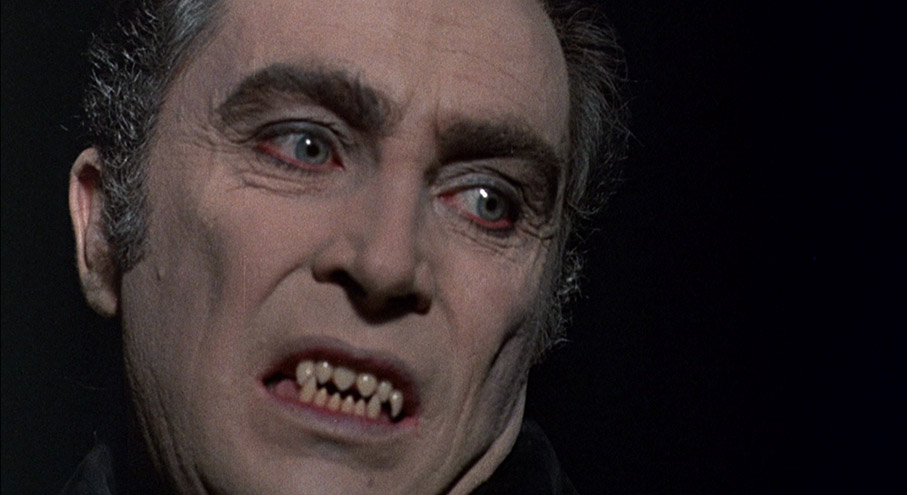
Count Yorga, Vampire was saluted on its release for being one of the first films to bring the classical vampire into the modern age, which is not strictly true. On this very disc, the venerable Kim Newman points out that Tod Browning did this back in 1931 with the first Universal Dracula, and Bram Stoker had already done likewise in the novel on which that film was based. But it's worth remembering that Count Yorga was released back in 1970 at the tail end of a decade-long dominance of the genre by Hammer, whose vampire output had consisted exclusively of period-set tales, and it was to be another two years before they brought their house vampire into modern times with Dracula AD 1972. And both Count Yorga films are better than Dracula AD 1972. A good deal better, as it happens. They also helped to break a long dry spell for the American vampire movie and mark the beginning of a transition period from the classical vampire of literature to the urban predators of Martin, The Lost Boys, Near Dark, et al.
So what is it, exactly, that makes these two vampire movies just that little bit special?
We get our first nod that the classical vampire tale has been brought into the present day at the very start of Count Yorga, Vampire, as a dock worker is paid off and a coffin-shaped crate is offloaded from a ship into the back of a pickup truck and driven through the busy streets of Los Angeles in a New World update of Dracula's arrival at Whitby. A short while later the likely occupant of this crate – the eponymous Count Yorga, a Bulgarian aristocrat with no trace of an accent – is conducting a séance at a social gathering for young Donna (Donna Anders) in an attempt to contact her recently deceased mother. His efforts are repeatedly disrupted by cynical joker Paul (a typically solid turn from Altman regular Michael Murphy), much to the irritation of his girlfriend Erica (Judy Lang), who like the others is trying her best to take the whole thing seriously. Unexpectedly, Donna does make contact with the spirit of her mother, an encounter that throws her into a state of hysteria which Yorga calms with mind-controlling hypnosis.
There are a number of neat little throwaway moments here that subtly confirm what an audience familiar with vampire tales should have already guessed and that the title has assured us, with Yorga declining the offer of a drink (echoing Dracula's famous "I never drink...wine") and requesting of his host, "I believe I brought a cape," as he is preparing to leave. Erica and Paul drive him to his isolated manor house (there's something rather fun about a seeing an aristocratic vampire wedged into the front seat of a VW camper van), but having dropped him off, they become stuck in mud at a spot that Paul is certain was dry just minutes earlier. After failing to free the vehicle, they elect to spend the night in it, but a short while later the now vampiric Yorga knocks Paul unconscious and attacks Erica, leaving Paul without a clue who hit him and Erica with no memory of the assault.
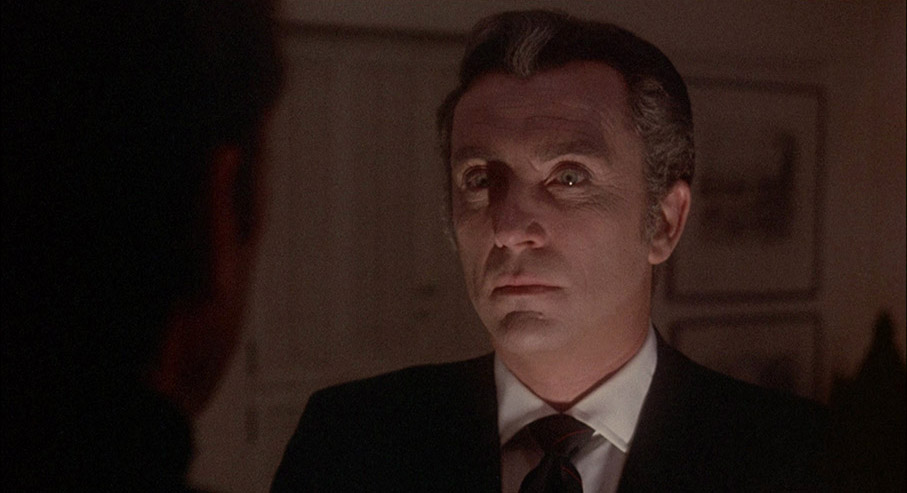
The following day, a tired and despondent Erica visits Dr. Hayes (Roger Perry), who blames her condition on blood loss from a pair of strange puncture marks on her neck. A blood test also reveals the presence of some unfamiliar sediments in Erica's blood, which makes this one of the first modern vampire movies to even float the idea of vampirism as a communicable blood disease (the concept actually goes back to the 1945 House of Dracula, but never really caught on until it could be more readily discussed as a metaphor for STDs). With nothing solid to report, Hayes tells Erica not to worry and to start chowing down on rare steaks, advice that later has a memorable pay-off.
It's here that the film's easy pacing and classic vampire feel (Yorga even raises his cloak to hide his attack on Erica in the Lugosi manner) gives way to something distinctly modern. As Paul and Donna's boyfriend Michael (Michael Macready, also the film's producer) start sharing their concerns about the séance and Count Yorga, Paul decides to give Erica a ring, but when we cut to her apartment it's clear that something is very wrong. It turns out that there's a specific reason why Kelljan keeps his camera at a low level here, but the effect is extremely disconcerting nonetheless, focussing our attention on a floor littered with discarded items and on Erica's slippered feet as she shuffles and stumbles around as if under the influence of some unspecified drug. What Paul and Michael find when they burst to the apartment is without question the most startling moment in either of the two films, and I'm thus not about to reveal its content here, but it does prompt an urgent call to Dr. Hayes, who helps to settle things down with an emergency transfusion (it's always handy when your boyfriend has the same blood type). In the discussion that follows, it's he who first floats the idea that vampirism could be the root cause of Erica's malaise. While I baulked at this a little on my first viewing some years ago, when I re-watched the film and picked up on the line about those abnormal blood test results, I was a little more willing to buy into the notion that a man of science would be the first to sympathetically respond to the suggestion (from an eminent blood specialist, mind you) that an ancient superstition might have a basis in medical fact. It's also here that Kelljan first confronts the problem of selling a classical vampire to a more cynical 70s audience via the difficultly Hayes has convincing others of the legitimacy of his theory. Despite what he's seen, Paul just can't take him seriously, and later when Hayes attempts to tell his story to the police, they dismiss him out of hand and put the phone down on him. The issue is neatly encapsulated in a heated exchange with Paul and Michael, when Michael wearily states that he cannot accept that vampires exist today, prompting Hayes to snap back instantly, "Today! Then you concede that they could have at one time?" This discussion may compress what would probably have gone on for a couple of hours in the real world, but it's persuasively handled, a convincingly written and performed blend of seemingly outrageous propositions, tempered disbelief and gradual softening to a concept that only minutes earlier seemed completely absurd.
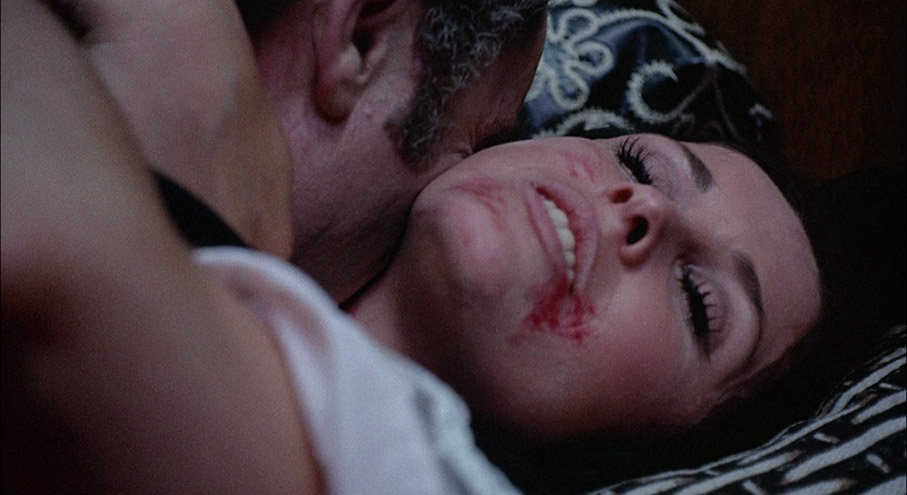
The famed sexual aspect of the vampire bite is depicted here in much the same manner as in the Hammer films that preceded it, in the longing of a female victim for the vampire that shows up at her (walk-in) bedroom window and the bite on the neck that almost triggers an orgasm. In an interesting twist on the norm, however, Yorga continues to kiss Erica in the manner of a passionate lover after he has fed, in the process smearing her own blood across her lips like makeup that has started to run in rainfall. And like many an aristocratic vampire of old, Yorga feeds exclusively on women (men he merely strangles or knocks unconscious), whom he then transforms into members of an undead harem that at one point looks set to include not just a woman but her daughter as well. Read into that what you will. The tradition of the vampire's protective human familiar is also carried over from the Universal and Hammer films in the shape of the brutish Bruddah (Edward Walsh), who bears the scars of what we can assume is abuse at the hands of his master, and is not above raping future female victims before delivering them to the Count, actions he then sheepishly admits to and accepts the punishment for.
That Count Yorga, Vampire was a made on a shoestring budget is sometimes visible in shots that drift out of focus (re-shoots cost money), in night-time exteriors that were obviously filmed in daylight and have not been graded to look as if they are taking place in the dark, and in stolen walk-and-talk shots that were clearly filmed mute and the (un-synchronised) dialogue added in post. But as others also state in the extras on this disc, these frayed edges help to distance the film from its genre predecessors and give it an edgy, rough-and-ready feel that was already starting to become a new horror aesthetic in post-Night of the Living Dead America. And that favourite money-saver of favouring talk over action is put to effective use here in an elongated scene in which Paul, Michael and Dr. Hayes pay Yorga a night-time visit and engage him in spurious conversation in an effort too keep him up until dawn. It's something the Count's inherent politeness and desire to avoid exposure prompt him to initially cooperate with, though as dawn approaches, his growing frustration edges slowly to the surface until he is left with no option but to take a more forceful stand. It's in this scene that Quarry shines the brightest, holding his increasing agitation in check and slowly sizing up the men that he quickly surmises are soon to become his foes. Later, so strong is his confidence in his own strength and power that when sat before a man who has come to his house to destroy him, he politely takes an improvised stake from him to toy with whilst he calmly outlines what makes vampires superior to humans before handing it back, clearly convinced that it will serve this would-be assassin no good purpose.
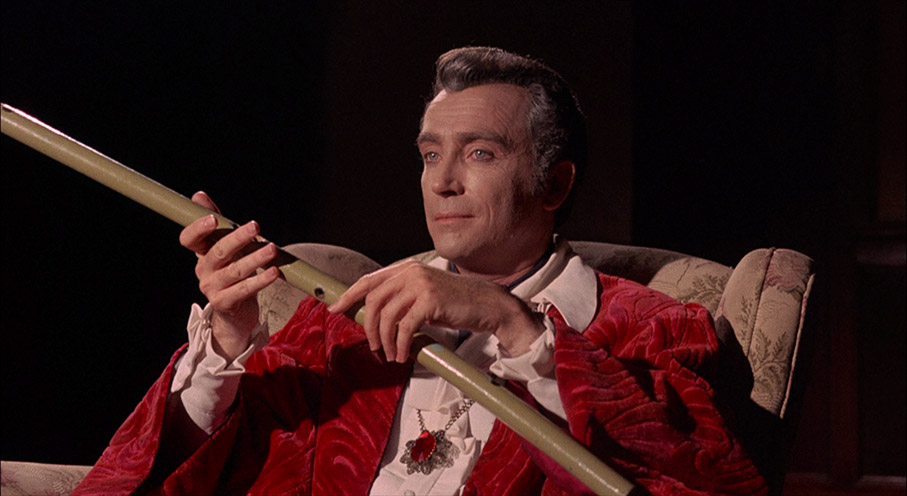
Count Yorga, Vampire scores precisely because its makers were not looking to make a quick buck on the drive-in circuit but to create as good a film as they could with the money and resources at their disposal. Favours were apparently called on to land actors who could all hold their own and make an impression even in the smallest role – producer/actor Michael Macready is the son of celebrated actor George Macready, who lends his distinctive voice here to the film's scene-setting narration, and Kelljan was a former actor himself with his own set of industry contacts. Bristling with the sort of twitchy, low-budget energy and inventiveness that you only seemed to find in early features from eager young filmmakers back in the late 60s and early 70s, this smart and entertaining work marked a transition point for the genre and gave the American vampire movie the shot in the arm (or should that be neck?) that it had for so long been crying out. Picked up by low budget genre specialists American International, its box-office success outstripped all expectations and quickly led to the commissioning of a second film. Hence...
| The Return of Count Yorga |
|
Without wanting to kick off with a spoiler for the first film (which if you've ever seen a vampire movie before, won't be much of a spoiler at all), there's a good chance that anyone new to the Count Yorga movies and who has just watched Count Yorga, Vampire is going to be wondering just how the Count in question was able to come back for a sequel. It's a point not even addressed here and the reason is actually quite simple – despite the implication of the title, The Return of Count Yorga isn't really a sequel but a re-working of the original film on a higher budget and with better production values. It thus has a more polished look and a touch more wit, but is it the better movie that many have claimed? Well, it depends who you talk to. Fear not, I'll be coming back to this.
The story kicks off at a fancy-dress fundraiser being held at an isolated orphanage, where Cynthia (Mariette Hartley) is outside taking the evening air. She's joined by orphanage boss Reverend Thomas (Tom Toner), who has come looking for Cynthia to usher her back inside, and reacts with fearful agitation when she points out that they can hear the Santa Ana winds, something the Reverend clearly regards as a portent of evil. We get a sign that he may be right when a group of zombie-like women climb out of their nearby graves (I love scenes like this) and send orphanage boy Tommy – who's out playing ball where he really shouldn't at this late hour – running straight into the arms of a snarling Count Yorga.
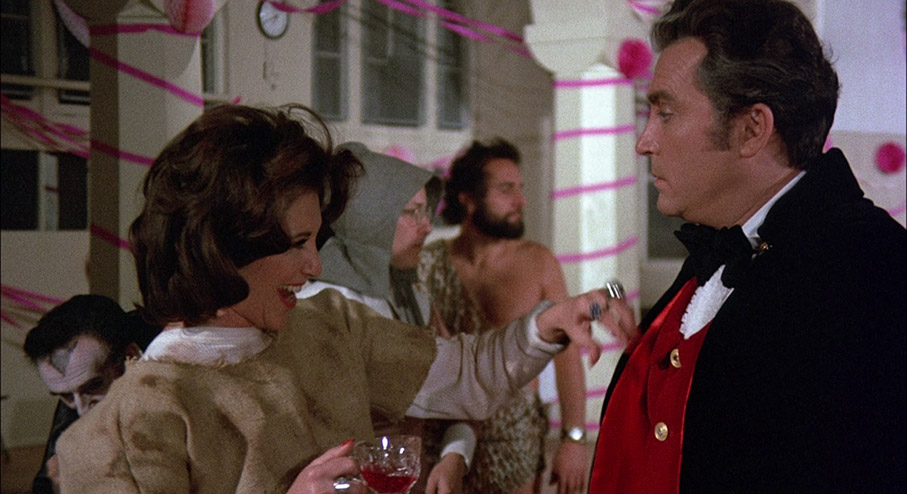
A short while later, Yorga shows up at the sparsely attended fundraiser, having recently bought the nearby Gateway Mansion and ostensibly here to introduce himself to his new neighbours. After taking a bite out of late arrival Mitzi (Jesse Wells), he meets and is entranced by Cynthia, who is back outside again for a whole new reason. Invited inside to meet the others, Yorga mingles with the guests and is even believed by one to have come dressed as a vampire, though in one a number of nicely done winks at audience expectation, the best costume prize is then awarded to a man kitted out as a pantomime Dracula. This triggers a general discussion on the subject of vampires and their past and present existence, which Yorga cannot help but chip in on. This helps to plant the first small seeds of suspicion in David, the psychiatrist boyfriend of the now afflicted Mitzi, who is discovered unconscious nearby just a few seconds later. In one of a number of neat directorial touches, as Mitzi is revived and begins conversing with her friends, Kelljan's camera ignores her and stays locked instead on Yorga as he turns his back on the group and walks calmly away.
What follows is, for me at least, the most atmospheric and unnerving scene from either of the two films, as Cynthia's family all wake in the night and find themselves drawn to the sitting room as the Santa Ana winds gust ominously outside, and Yorga's harem of undead brides walks out of his house and off into in the darkness. As the wind builds in strength, shutters bang ominously and the camera intermittently peers in through a window at the increasingly rattled occupants in what may or may not be a point-of-view shot. Kelljan wisely takes his time with this scene and in the process cranks the tension up to the point where the shock moment on which it peaks is at its most effective – when I saw this as a teenager, I genuinely jumped out of my chair. What follows is a home invasion by a gang of murderous vampires, one that would doubtless have had even more impact on the film's release due to still strong memories of murders committed by the Charles Manson 'family', which this scene was clearly influenced by. Cynthia's mother and father are killed, Ellen is bitten and transformed into a new bride for Yorga, and Cynthia is subdued and transported to Yorga's house, where she awakes with no memory of the attack. The only one not woken is the family's deaf housemaid Jennifer (played by co-screenplay writer and director Kelljan's wife, Yvonne Wilder), to whom Yorga instinctively signed a greeting when the two first met, a small but effective demonstration of the knowledge that a man of his age would have acquired over the years.
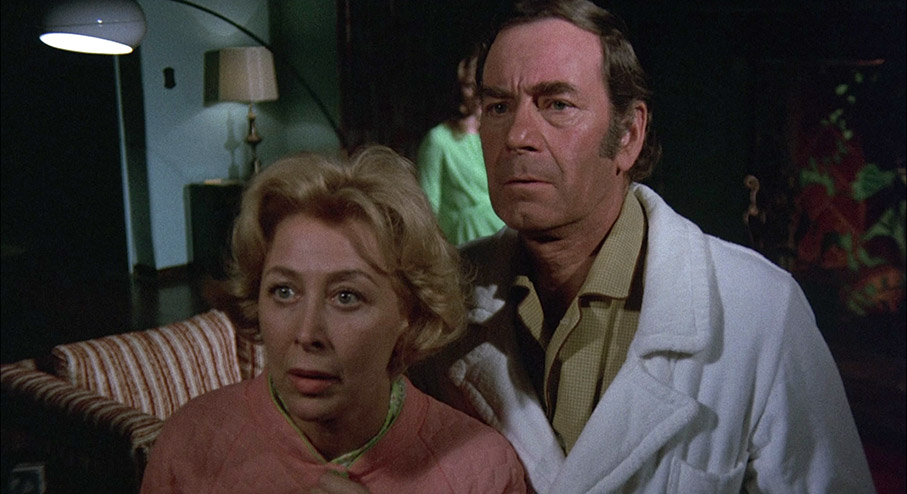
The following morning, Jennifer discovers the bodies and contacts the police, but by the time they arrive all trace of the killings has been mysteriously removed. Tommy, who was sleeping over and who witnessed the attack, claims to have seen nothing. The police thus shrug the whole thing off and depart, but David still suspects that something is amiss and is the first to start wondering if there might be something in this vampire nonsense. If you start getting a whiff of déjà-vu at this point then that's hardly surprising, as not only is this how the first film played out at this stage, but David is played by Roger Perry, who as Dr. Hayes in the first film fulfilled exactly the same role as he does here. Once again he struggles to convince the police, but this time around Kelljan has a little more fun with the notion, undermining David's urgent instructions on how to improvise a crucifix with two sticks as a protection against vampires with Sgt. O'Connor's amused refusal to take him remotely seriously. In a lovely bit of irony, when David later gets to shape his sticks (and then his fingers) into a protective cross, the foe he's attempting to defend himself against is the human Bruddah, who simply pulls the twigs from his hand and slaps his fingers away.
When David leads detectives Madden and O'Connor into the house on a climactic confrontation and rescue mission, the sense that they are trapped in a labyrinthine building and under siege from all sides is vividly captured in a single, beautifully executed handheld shot in which the policemen find every corridor and stairwell sequentially cut off either by closing doors, Bruddah, or approaching vampire brides. There's also a sense here that Yorga has become more powerful since the first film, despite a climactic one-on-one in which he appears to be no stronger – and no more skilled a fighter – that a puny human, though it turns out that there is more to this scene than first meets the eye.
Once again the casting and performances are top drawer, with Quarry shining for a second time as Yorga and displaying an entertaining air of contemptuous arrogance for humankind – "You like this kind of music?" asks the wavy-haired boy bashing out tunes on the piano at the fundraiser, to which Yorga responds frostily, "Only when played well." The supporting cast are also strong here, particularly Mariette Hartley as Cynthia, Yvonne Wilder as Jennifer, and the instantly recognisable Rudy De Luca and Craig T. Nelson as cynical detectives Madden and O'Connor (Nelson does a lovely line in trying to contain his amusement). There's even an enjoyable on-screen cameo from producer Michael Macready's father George as eccentric occult expert and Ken Russell lookalike Professor Rightstat. Visually it's also a more handsome looking film than its predecessor, thanks in no small part to the work of cinematographer Bill Butler, whose later credits include Jaws, The Conversation, Demon Seed and Damien: Omen II.
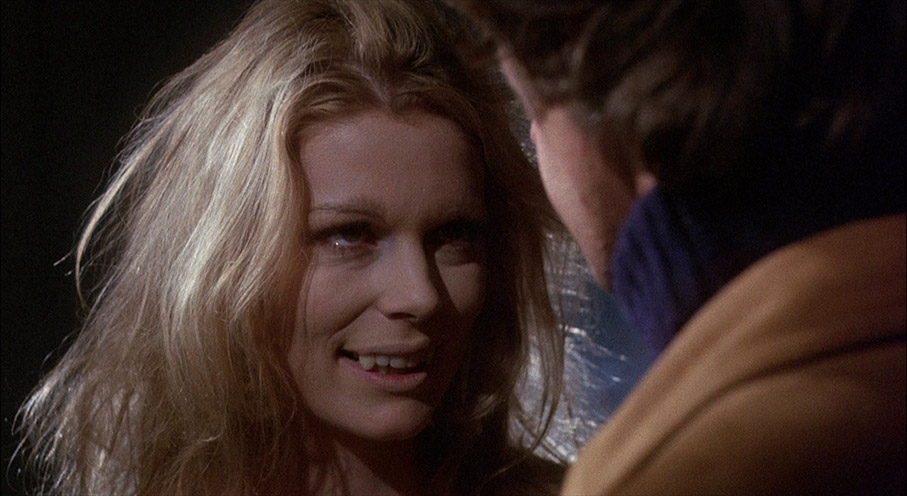
Whether The Return of Count Yorga is a better film than Count Yorga, Vampire really is a matter of personal taste. In my youth I do remember enjoying it more, for its slicker production values, for its small but memorable moments of humour, and for that demonic home invasion sequence, which stayed with me for some years and still plays every bit as well as I remember. But coming back to both films after a break of several years I find myself sympathetic to the views of the contributors to the extra features on this disc, who collectively express a preference for the rough-around-the-edges energy that helps define the first film and which is all but absent from its more polished successor. In the end I probably hold each in equally high regard but for different reasons. Both have an excellent, iconic performance at their centre, strong supporting casts, thoughtful screenplays and impressive direction, but it's what distinguishes each as individual films, together with their role in the genre's transition from classical to modern, that make them two of the most enjoyable and important vampire movies of their day.
It's that curse of the viewing media of the past again, whether it be scratched and damaged cinema prints or ropey VHS transfers, but hear the words 'low budget' and 'horror' and my expectations automatically take a dip. This does, however, mean that I still get to experience a frisson of excitement when the transfers are as good as the ones on this Blu-ray. Sourced from HD masters supplied by MGM via Hollywood Classics, both films look very impressive here, with a frequently crisp sharpness and level of detail, black levels you could lose your way in, and sprightly reproduction of brighter colours. Frequently with Arrow transfers licenced from other sources, you'll find a credit in their booklet announcing that further restoration work was carried out by Deluxe in London, but that's apparently not the case here, which perhaps explains the dust spots that remain on both films – they're far from frequent and never distracting, but a few are quite large. Just occasionally, there is also just a small hint of frame jitter on single shots here and there and a pair o visible scratches on one shot in the first film, but in all other respects this is a very fine job that substantially improves on my previous region 1 DVD set.
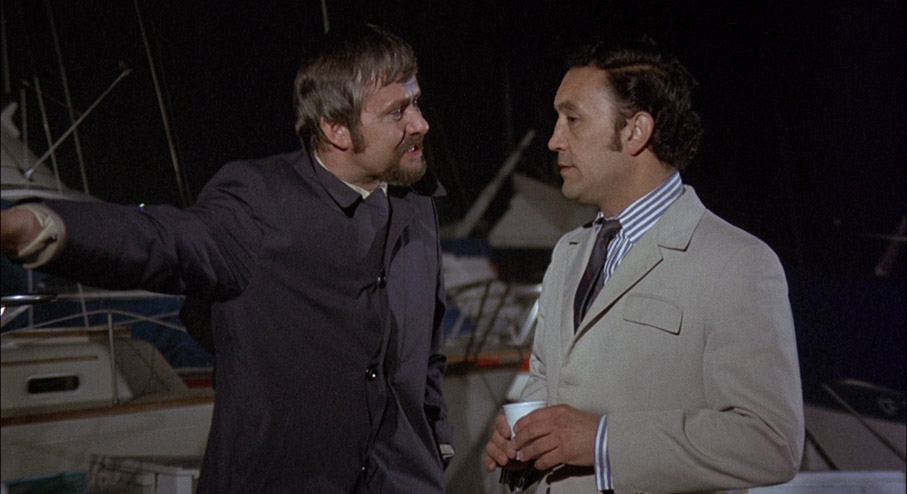
The Linear PCM 2.0 mono track does show its age in the expected range limitations and lack of DTS style clarity, but otherwise is in good shape, with no distracting background noise or damage to contend with and clear reproduction of dialogue throughout.
Optional English SDH subtitles are also available.
An Appreciation by Kim Newman (33:02)
A typically engaging appreciation of both films by horror writer Kim Newman, albeit one that should definitely be saved until after you've watched them if you want to avoid some pretty big spoilers. There is inevitably some overlap with the commentaries and the booklet (that the first film started off as a sexploitation horror crops up everywhere, including the review above), but there's still a good deal of interesting analysis of the films and their making that is specific to this feature, and it's Newman who points out that the concept of bringing an old world vampire into a modern setting was actually in Bram Stoker's original Dracula and Tod Browning's genre-defining 1931 film adaptation. Excellent.
Image Gallery (2:23)
86 colour production and behind-the-scenes stills from The Return of Count Yorga, which can be advanced manually with the remote control. It's a shame the stills discussed in the commentary from Count Yorga, Vampire that give a hint of the sexploitation film it nearly was could not be located and included here.
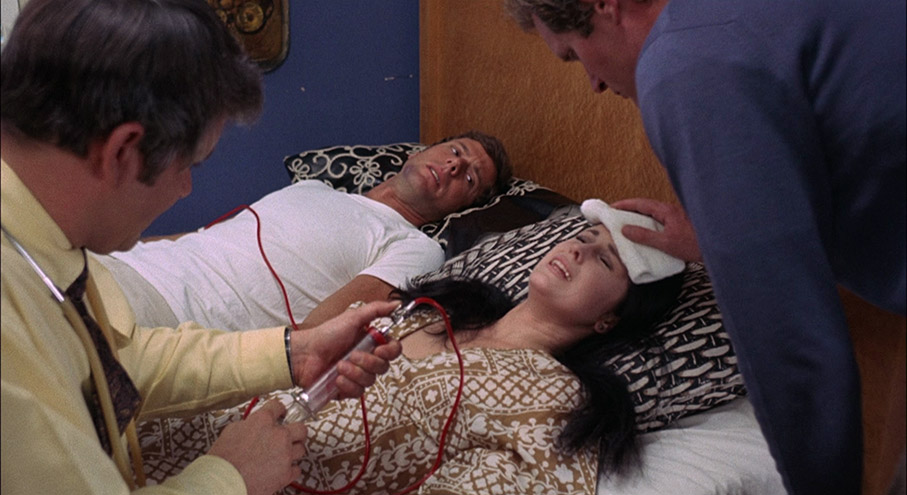
Count Yorga, Vampire commentary
Journalist, film historian and horror devotee David del Valle is joined by author, scriptwriter and fellow genre aficionado C. Coutney Joyner for a lively and infectiously enthusiastic, information-packed trip through the film and its making. Both are huge fans of the film and especially Robert Quarry, to whom this commentary is dedicated and who del Valle became and remained friends with up until his death in 2009. Working together, these two come across as encyclopaedic in their knowledge of both films and the vampire genre in general, but still find time to flesh out the facts with personal recollections and to comment on the manner in which scenes are filmed, or tip their hats to the effectiveness of individual shots or sequences. There's plenty on the actors, especially Quarry, plus career information director Bob Kelljan, producer and actor Mike Macready and even editor Tony de Zarraga, who went on to edit Pat Garrett and Billy the Kid and The Killer Elite for Sam Peckinpah. It's all terrific stuff, and the inside information on Quarry's views and work on the production (I was heartened to hear that he remained proud of his work on the film and loved meeting the fans) is a very real bonus.
Return of Count Yorga commentary
Recorded shortly after the above, this once again features Davis del Valle and C. Courtney Joyner and is every bit as a busy, fact-filled and enjoyable as their commentary on the first film. As I hinted in my own review, their admiration for the sequel is tempered just slightly by their preference for the energy and rougher edges of the first film, which del Valle argues is more clearly the work of hungry filmmakers. Parallels are drawn with Scream Blacula Scream (which Kelljan also directed), info is provided on everything from George Macready to American International, and it took this commentary to make me aware of how little blood there is in the second film. There's loads more, all of it good. Another splendid extra.
Count Yorga, Vampire Trailer (2:25)
A rock 'n' roll paced trailer for the first film that is cut almost like a music video but still makes for a pretty good sell.
Return of Count Yorga Trailer (1:40)
A solid enough sell for "the most horrifying love story ever filmed" that actually slows down a slow motion shot.
Also included is a Booklet, the bulk of which consists of an essay on the films and their production by Frank Collins titled A tale of Unspeakable Cravings. This is a really good read, and we're given a hint of the level of research that went into it by the footnotes that sit at the bottom of every page. Also included are the cast and crew credits, a number of stills, brief details of the transfer and a reproduction of my favourite poster for the first film, plus a more commonly seen one for the second.
I've had a fondness for the Count Yorga films since I first saw them back in my youth, probably on TV and with the first film not in the uncut version provided here (which still wears the original title The Loves of Count Iorga), so was really looking forward to this release. And it doesn't disappoint – both films look great and there are some excellent special features, making this a must-have for vampire movie aficionados and a dream ticket for existing fans of the films. Highly recommended.
|